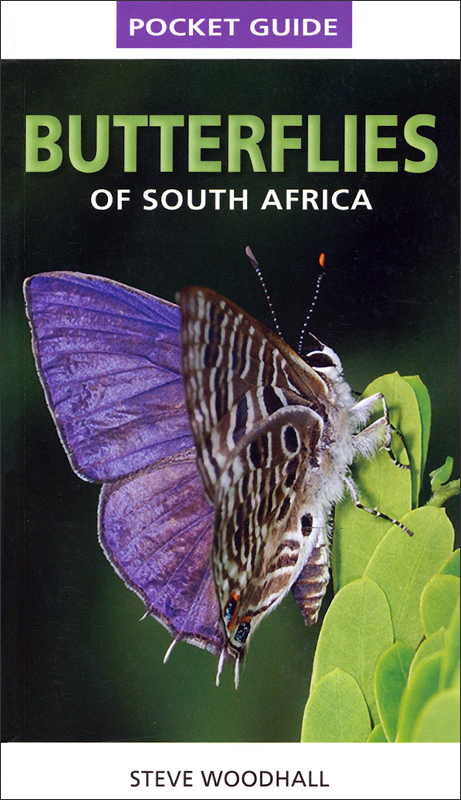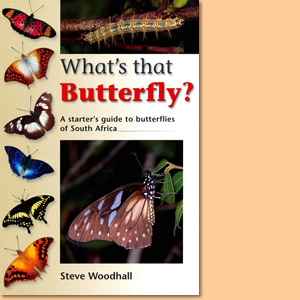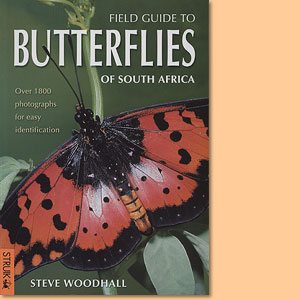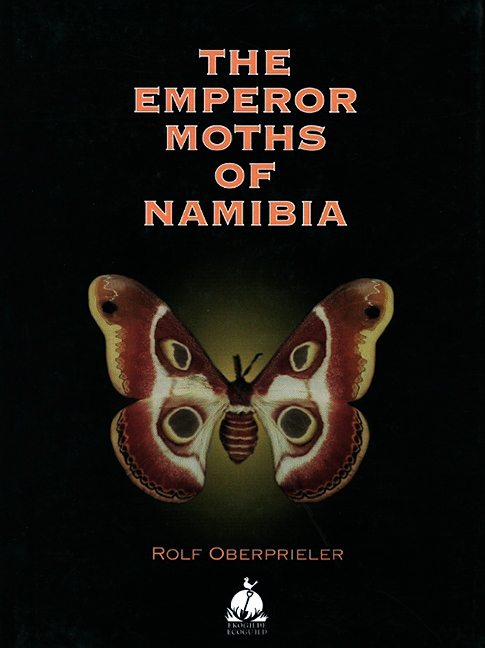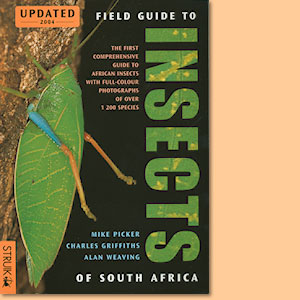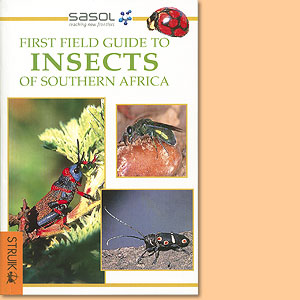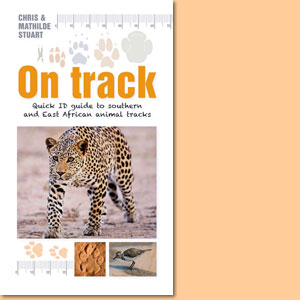Pocket Guide: Butterflies of South Africa, by Steve Woodhall
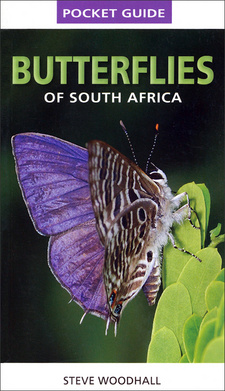
Pocket Guide: Butterflies of South Africa, by Steve Woodhall. Randomhouse Struik - Nature. Cape Town, South Africa 2013. ISBN 9781920572471 / ISBN 978-1-920572-47-1
South Africa is home to more than 670 butterfly species - a substantial number for a country that lies largely outside of the tropics. Steve Woodhall's pocket guide to butterflies should prove invaluable to beginners and more experienced alike.
Where to find butterflies in South Africa
Some butterflies occur across several, or all, biomes. Others, the fascinating specialists, are found in one biome only, and often just within a tiny area of that biome. While butterflying is a great way to get you out into South Africa's wild and beautiful places, you don't have to go too far afield to get started.
Gardens:
Increasingly, gardeners are planting the indigenous species that attract butterflies. A large well-established garden with trees, shrubs and locally indigenous flowers is a great place to find butterflies. Although wild females must lay their eggs on their natural food plants, the nectar that adults feed on need not be indigenous. Even an exotic alien like Cherry Pie Lantana camera can be an excellent source of nectar.
Roadsides:
Because they tend not to be cultivated, and thus nadvertently preserve the last remnants of wild habitat, road verges are often surprisingly rich in butterflies. In addition, authorities may cut back roadside bush or scrub to improve visibility, allowing flowering plants to thrive. In the savanna areas north of the Soutpansberg, good autumn rains herald great butterflying, as run-off from the road results in luxuriant plant growth. Flowers like Vernonia centauroides attract thousands of outterflies, usually Pieridae (which includes the whites, tips and yellows), as well as a sprinkling of butterflies from other families. Days may be spent here with a fresh surprise awaiting you or each clump of flowers.
Hilltops:
For those with the energy to climb, or who can find a mountain with a handy road to its summit, the peaks of koppies, ridges and crags are great places to see butterflies. This is because, among many butterfly species that occur at low density, the males have evolved to congregate at prominent points, such as tall trees, rocks and hilltops. Here they vie for the best vantage points from which to pursue females that come up the hill later n the day in search of mates. This gathering of competing males in a lek' territory - a kind of real life kmg-of-the-castle game - will be familiar to many birders. Some species rise to the summits as early as 08h00, others 99B1 wait longer, sometimes delaying until the late afternoon. A day out on a hilltop can therefore be a awarding experience with different butterflies coming up every hour.
Forests:
The image of a butterfly-filled tropical rainforest is rightly something of a cliche, only reinforced by butterfly flight houses with their lush vegetation, steamy conditions and myriad butterflies. These exhibits are a wonderful experience, especially for those who aren't lucky enough to live close to a real tropical forest. South Africa does have tropical forests - fewer and less extensive than those in Central and West Africa - but enough to give you the real experience. Butterflies are highly seasonal. No matter where you are in the world, the best time to visit a tropical forest is just after the rains. Even in the Amazon you'll see hardly any butterflies if you visit at the wrong time of the year. The same is true of forests in South Africa. At the height of summer they can be almost butterfly-free. But in late summer, autumn and ever winter forests may be teeming with butterflies. (...)
This is an excerpt from the book: Pocket Guide: Butterflies of South Africa, by Steve Woodhall.
Title: Pocket Guide: Butterflies of South Africa
Author: Steve Woodhall
Publisher: Randomhouse Struik
Imprint: Nature
Cape Town, South Africa 2013
ISBN 9781920572471 / ISBN 978-1-920572-47-1
Softcover, 11 x 18 cm, 152 pages, numerous colour photos and maps
Woodhall, Steve im Namibiana-Buchangebot
Pocket Guide: Butterflies of South Africa
This pocket guide offers concise text describing the habits, favoured habitat and early life stages of butterflies of South Africa.
What's that Butterfly?
What's that Butterfly? introduces the novice to a selection of the more than 660 species of butterfly in South Africa.
Field Guide to Butterflies of South Africa
For easy identification in the field this comprehencive field guide features all of South Africa’s more than 660 butterfly species.
Weitere Buchempfehlungen
The Emperor Moths of Namibia
The Namibian fauna includes many widespread and rarest species of the Emperor Moths.
Field Guide to Insects of South Africa
The first comprehensive field guide to insects of South Africa presenting over 1200 species in colour.
First Field Guide to Insects of Southern Africa
These little guides are an invaluable resource for beginners
On Track: Quick ID Guide to Southern and East African Animal Tracks
On Track is a quick identification guide to tracks of Southern and East African most commonly found mammals, reptiles, rodents, birds and insects.

